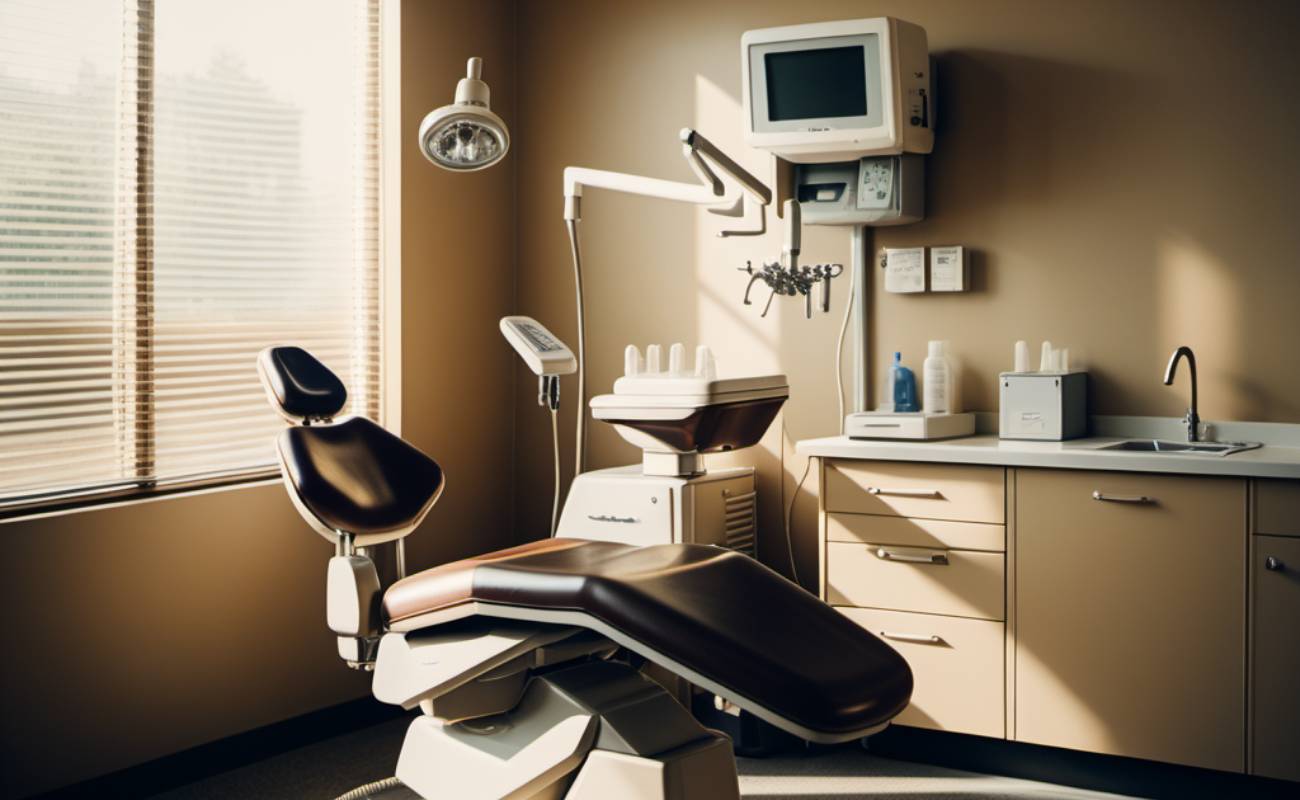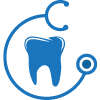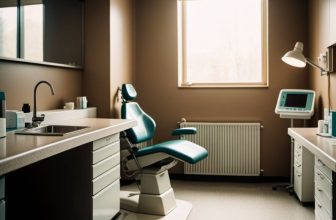
A loose tooth can be a concerning and uncomfortable experience, whether it’s the result of an injury, gum disease, or other oral health issues. The good news is that modern dentistry provides various effective treatments to address loose teeth and prevent further complications. In this comprehensive guide, we will explore the common causes of loose teeth, the potential risks associated with leaving them untreated, and the diverse treatment approaches available to stabilize and restore a healthy, functional smile.
I. Causes of Loose Teeth
Loose teeth can be attributed to various factors, including:
1. Trauma:
– Accidents, falls, or injuries to the mouth can cause teeth to become loose due to the impact.
2. Gum Disease (Periodontitis):
– Advanced gum disease can lead to the deterioration of the bone supporting the teeth, resulting in tooth mobility.
3. Bruxism (Teeth Grinding):
– Habitual grinding or clenching of teeth, especially during sleep, can contribute to tooth mobility over time.
4. Tooth Abscess:
– An infection around the tooth or in the root canal can lead to bone loss and tooth instability.
5. Pregnancy Gingivitis:
– Hormonal changes during pregnancy can sometimes lead to gum inflammation and looseness of teeth.
II. Potential Risks of Untreated Loose Teeth
Leaving a loose tooth untreated can pose several risks, including:
1. Tooth Loss:
– Untreated mobility can progress to the point where the tooth is at risk of falling out.
2. Chewing Difficulties:
– Loose teeth can impact your ability to chew effectively, affecting your diet and nutrition.
3. Changes in Bite Alignment:
– Untreated tooth mobility can alter the natural alignment of the bite, causing issues with jaw function and potential discomfort.
4. Gum and Bone Damage:
– Continued instability can lead to further damage to the gums and the bone supporting the teeth.
III. Treatment Options for Loose Teeth
The approach to treating a loose tooth depends on the underlying cause and the severity of the condition. Common treatment options include:
1. Scaling and Root Planing:
– If gum disease is the cause, deep cleaning procedures like scaling and root planing can help remove plaque and tartar, promoting gum health.
2. Dental Splints:
– Splints, which are devices attached to the loose tooth and adjacent stable teeth, can provide support and stability while the tooth heals.
3. Dental Crowns:
– Crowns may be used to cap and protect a loose tooth, providing additional support.
4. Orthodontic Treatment:
– In cases where bite alignment issues contribute to tooth mobility, orthodontic treatment may be recommended.
5. Tooth Extraction and Replacement:
– In severe cases, where a tooth is beyond repair, extraction may be necessary. Replacement options include dental implants, bridges, or dentures.
IV. Seeking Prompt Dental Care
As with any dental concern, seeking prompt care is crucial when dealing with a loose tooth. Early intervention can often prevent further complications and increase the likelihood of successful treatment.
V. Preventive Measures for Tooth Stability
While not all cases of loose teeth can be prevented, some measures can contribute to overall tooth stability:
1. Maintain Good Oral Hygiene:
– Brushing, flossing, and regular dental check-ups help prevent gum disease and maintain oral health.
2. Use Mouthguards:
– If you grind your teeth, wearing a custom-fitted mouthguard can protect your teeth from the effects of bruxism.
3. Address Trauma Promptly:
– If you experience a blow to the face, seek dental attention promptly to assess any potential damage.
4. Balanced Diet:
– Proper nutrition supports overall oral health, contributing to the strength of teeth and supporting structures.
VI. Treatment and Recovery Process
The treatment process for a loose tooth involves:
1. Dental Examination:
– Your dentist will conduct a thorough examination to identify the cause and extent of the tooth’s mobility.
2. X-rays:
– X-rays may be taken to evaluate the condition of the surrounding bone and identify any underlying issues.
3. Treatment Planning:
– Based on the examination and X-ray results, your dentist will discuss suitable treatment options with you, considering factors such as the cause of mobility and the overall condition of your oral health.
4. Procedure:
– The specific procedure will depend on the chosen treatment option. It may involve deep cleaning, the placement of a dental splint, or other interventions aimed at stabilizing the tooth.
5. Post-Treatment Care:
– Your dentist will provide post-treatment care instructions, including guidelines for oral hygiene, dietary restrictions, and any necessary follow-up appointments.
6. Recovery:
– Recovery times vary based on the complexity of the procedure. Follow-up appointments are crucial to monitor progress and address any concerns.
VII. Aesthetic Concerns and Functional Restoration
In cases where a loose tooth impacts both aesthetics and function, treatment options are often chosen to address both aspects. Dental crowns, for example, not only stabilize the tooth but also contribute to a natural-looking appearance.
VIII. Long-Term Oral Care
After undergoing treatment for a loose tooth, maintaining long-term oral care is crucial to prevent future issues. Follow the post-treatment care instructions provided by your dentist, attend regular check-ups, and address any emerging concerns promptly.
IX. Emphasizing Patient Education
Understanding the factors contributing to loose teeth and being aware of preventive measures are vital aspects of patient education. Dentists play a crucial role in ensuring that patients are informed about the causes of tooth mobility and the steps they can take to maintain optimal oral health.
1. Patient Consultation:
– Dentists should engage in comprehensive consultations with patients to discuss their oral health history, habits, and any potential risk factors for tooth mobility.
2. Educational Materials:
– Providing informative materials, such as pamphlets or digital resources, can enhance patient understanding of the causes and preventive measures related to loose teeth.
3. Demonstrating Proper Oral Hygiene:
– Dentists can demonstrate correct brushing and flossing techniques, emphasizing their role in preventing gum disease and preserving tooth stability.
4. Customized Advice:
– Tailoring advice based on individual patient needs, such as recommending a mouthguard for those with bruxism, enhances the effectiveness of preventive measures.
X. Collaboration with Dental Hygienists
Dental hygienists play a vital role in supporting patients through preventive care and reinforcing good oral hygiene practices. Collaborative efforts between dentists and dental hygienists contribute to comprehensive patient care.
1. Regular Cleanings:
– Dental hygienists can conduct regular cleanings to remove plaque and tartar, addressing one of the primary causes of gum disease and tooth mobility.
2. Patient Education Sessions:
– Hygienists can conduct educational sessions, reinforcing the importance of routine dental visits, proper oral care, and the role of nutrition in maintaining oral health.
3. Monitoring Changes:
– Hygienists, during routine appointments, can monitor changes in gum health and tooth stability, providing valuable information to the dentist for early intervention.
XI. Integrating Technology for Monitoring
Advancements in dental technology offer innovative ways to monitor and assess oral health continuously. Integrating technology into patient care can enhance early detection and personalized treatment planning.
1. Digital Imaging:
– Continued use of digital X-rays and 3D imaging allows for detailed assessments of bone density and potential issues affecting tooth stability.
2. Teledentistry Follow-ups:
– Implementing teledentistry for follow-up consultations enables dentists to monitor patients remotely, ensuring that any emerging concerns are addressed promptly.
3. Smart Dental Products:
– Recommending smart toothbrushes or apps that monitor brushing habits can assist patients in maintaining optimal oral hygiene between appointments.
XII. Research and Development
Ongoing research in the field of dentistry contributes to the development of new techniques and materials for treating loose teeth. Dentists staying abreast of these advancements can offer patients cutting-edge solutions.
1. Clinical Trials:
– Dentists can participate in or stay informed about clinical trials exploring novel treatments and technologies related to tooth stability.
2. Continuing Education:
– Regularly attending seminars, workshops, and conferences allows dentists to update their knowledge and skills, ensuring they can provide the best possible care to their patients.
XIII. Community Outreach Programs
Engaging with the community through outreach programs fosters awareness about the importance of oral health and encourages regular dental check-ups. Community involvement helps address oral health disparities and ensures that individuals are informed about available dental services.
1. Free Dental Check-ups:
– Organizing events offering free dental check-ups allows individuals to access dental care who might otherwise not seek it due to financial constraints.
2. Educational Workshops:
– Conducting workshops in schools, community centers, and workplaces helps disseminate information about preventive measures and the significance of early dental intervention.
XIV. Addressing Oral Health Disparities
Recognizing and addressing oral health disparities within the community is crucial for promoting equitable access to dental care. Dentists can actively participate in initiatives aimed at reducing disparities and improving oral health outcomes for all.
1. Collaboration with Community Organizations:
– Dentists can collaborate with local community organizations to identify and address barriers to dental care, such as financial limitations or lack of awareness.
2. Government Advocacy:
– Engaging in advocacy for policies that support increased access to dental care, especially for underserved populations, contributes to systemic improvements in oral health.
XV. Future Outlook: Advancements and Challenges
The future of treating loose teeth holds promise with ongoing advancements in dental science and technology. However, challenges such as ensuring universal access to quality dental care and addressing socio-economic factors influencing oral health outcomes will continue to shape the landscape.
1. Advancements in Regenerative Dentistry:
– Research in regenerative dentistry aims to develop therapies that stimulate the regeneration of damaged tooth-supporting structures, providing alternative treatments for tooth mobility.
2. Preventive Public Health Measures:
– Future efforts should focus on preventive public health measures, including early intervention in childhood, promoting oral hygiene education, and expanding access to affordable dental care.
XVI. Conclusion: Empowering Healthy Smiles
In conclusion, addressing loose teeth involves a multifaceted approach encompassing patient education, collaborative care, technological integration, and community engagement. Dentists, alongside their dental teams, play a pivotal role in not only treating existing conditions but also preventing future oral health issues.
Empowering individuals with knowledge about maintaining optimal oral health, ensuring access to quality dental care, and adapting to emerging technologies will collectively contribute to a future where healthy and stable smiles are within reach for everyone. As the dental community continues to evolve and embrace innovation, the prospect of preserving and restoring tooth stability remains brighter than ever.







